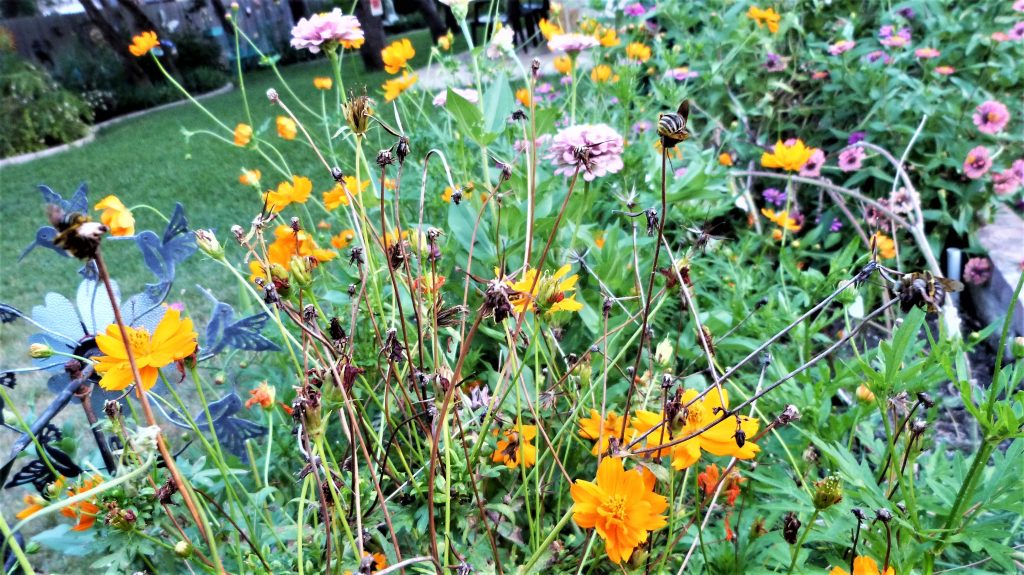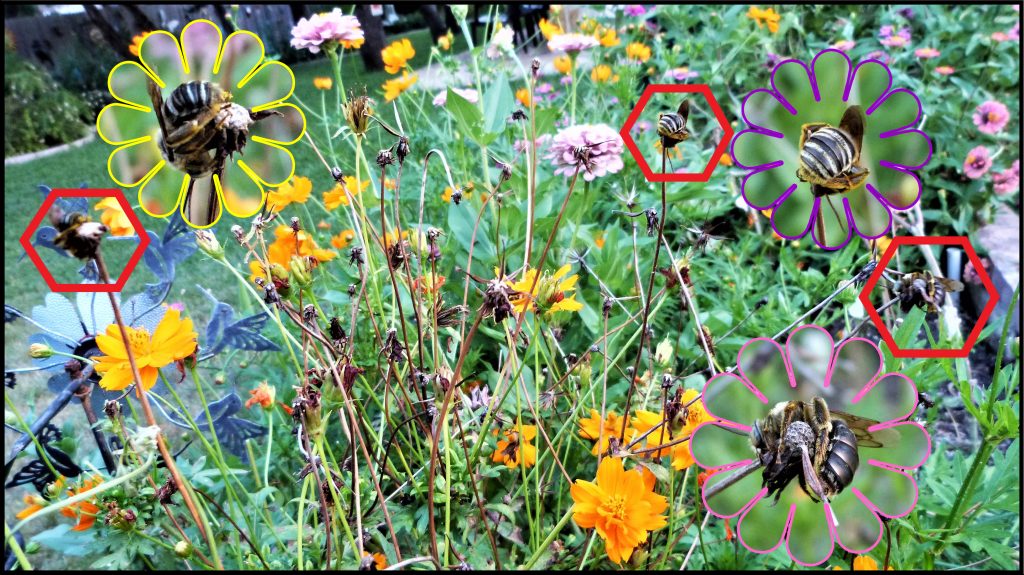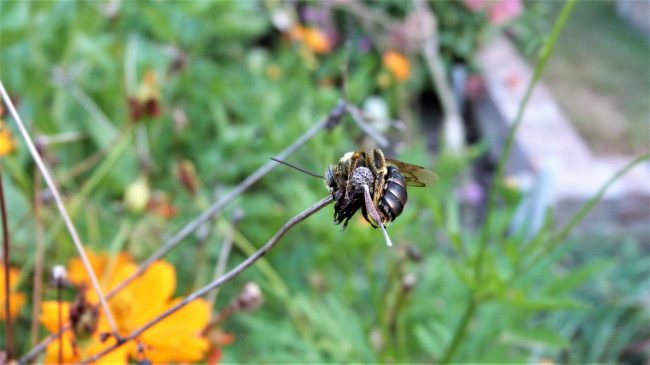Ever wonder why we call them flower “beds”? Maybe because bees and other insects often hunker down for the evening by tucking into the flowers for a good night’s rest.
Candy Roach of San Antonio documented the phenomenon of “sleeping bees” beautifully and struck upon an often overlooked benefit of the pollinator garden. Flowers and spent seed heads serve as overnight roosts for myriad creatures–in particular, solitary bees.
Roach, a Bexar County Master Gardener, sent the photos below depicting pairs and singles of solitary bees taking a nap one recent summer evening. In an email to a group of San Antonio gardening buffs, Roach addressed the feeling many of us have this time of year–when peak summer heat takes a toll on South Texas gardens and sparks the urge to “clean up” the spent flower heads and burnt stems left in its wake.
“But, whose bed are you actually going to tidy up?” she asked, inviting readers to take a closer look at the photos below. The second shot shows at least half a dozen sleeping bees, three of which have been highlighted and magnified.
Sleeping in flowers is a common behaviour, especially among male solitary bees, explained Dr. John L. Neff, director of the Central Texas Melittological Institute and co-author of The Solitary Bees: Biology, Evolution, Conservation.

Just another evening in the pollinator garden…but wait. Photo by Candy Roach

Upon closer inspection, solitary bees sleep in the flower “bed.” Photo taken at 8:30 PM by Candy Roach in San Antonio, Texas
Unlike European honey bees, native solitary bees don’t nest in communal hives like their more celebrated brethren. They go it alone. Females build a nest, typically a small hole in the ground, in which to lay their eggs. That’s why pollinator gardening best practices recommend leaving some soil exposed.
During the day, the female bees forage for pollen and nectar. They bring back the food to their ground nests to feed their larvae.
“Most bees are single moms and receive little to no help from males,” said Sandra Rehan, Assistant Professor in the Department of Biology at York University, Canada and director of the Rehan Lab, which studies the origin and maintenance of social behaviour in wild bees.
Since the male bees don’t help to build or maintain the nests, they are often not welcome inside, said Rehan. “Females will prevent males or other intruders from entering by guarding the nest entrance or plugging it with soil or plant material,” she said.
Thus males often take up residence in old abandoned nests. “Often a collective of males can be found together…a ‘bachelor pad.'” said Rehan. “Why they do this is unknown. We know remarkably little about solitary bees and even less about the males,” she added.
Solitary bees are not the only species that sleep in or on flowers. According to Neff, flowers that close for the night, like prickly poppies, are especially popular. Some bees prefer prickly pear flowers, and when the blooms close in the evening, the males “have to force their way out,” he said.
Next time you walk in the pollinator garden, know that your flower beds serve a purpose beyond aesthetics, even in their raggedy state of high summer. “Go go back inside and kick off your shoes and know that your little messy patch is helping our pollinators as you enjoy your evening,” said Roach.
TOP PHOTO: Male Eucerine bee tucks in for the evening. Night night. Photo by Candy Roach
Related posts:
- San Antonio’s 300for300pollinator habitat initiative expands to 500 by 2020
- Popularity of pollinator gardens growing in areas prone to drought
- Planting a butterfly garden? Here’s tips on how to do it
- Mostly native butterfly garden outperforms lawn every time
- A year in the life of an urban butterfly garden
- Downtown River walk plot converts to pollinator garden, creature haven
- Converting your Lawn to a Butterfly Garden
- San Antonio becomes first National Wildlife Federation Monarch Champion city
- Tropical Milkweed: To Plant it or Not is No Simple Question
- How to raise Eastern Swallowtails
- How to raise Monarch butterflies at home
Like what you’re reading? Don’t miss a single post from the Texas Butterfly Ranch. Sign up for email delivery, like us on Facebook, or follow us on Twitter, @monikam.


This was a very endearing and informative post. Thanks!
I absolutely agree with you
Great post, thanks
interesting info, thanks
[…] Check out this awesome Texas Butterfly Ranch article on solitary bees sleeping in spent flower heads: https://texasbutterflyranch.com/2019/07/31/flower-bed-works-overtime-as-overnight-bachelor-pad-for-s… […]
[…] Check out this awesome Texas Butterfly Ranch article on solitary bees sleeping in spent flower heads: https://texasbutterflyranch.com/2019/07/31/flower-bed-works-overtime-as-overnight-bachelor-pad-for-s… […]